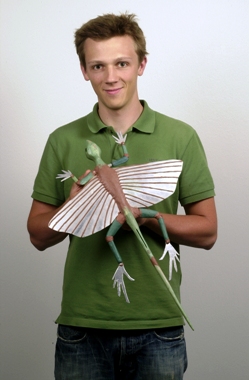
Some reptiles were flying about 50 million years earlier than Archaeopteryx, and even before large dinosaurs roamed the Earth, reports Dwain Eldred
Geoscientist Online 14 July 2008
A new study of extinct reptiles called kuehneosaurs, by scientists from the University of Bristol, shows that these early flyers used extraordinary extensions of their ribs to form large gliding surfaces on the side of the body. The results are published today in the journal Palaeontology.
Kuehneosaurs, which grew up to 70cm long, were first found in the 1950s in an ancient cave system near Bristol. Their lateral 'wings' were always assumed to be some form of flying adaptation, but their aerodynamic capability had never been studied.
Koen Stein (Institut für Paläontologie, Bonn, Germany), did the work while he was studying for an MSc in palaeobiology at Bristol University, and has shown that of the of the two genera found in Britain,
Kuehneosuchus, with its elongate wings, was a glider, while
Kuehneosaurus, with its much shorter 'wings', was a parachutist. However, as the two forms are so alike in other respects, it remains possible that they represent sexually dimorphic males and females of the same species.
Stein said: "We didn't think kuehneosaurs would have been very efficient in the air, but all the work up to now had been speculation; so we decided to build models and test them in the wind tunnel in the Department of Aerospace Engineering at Bristol.